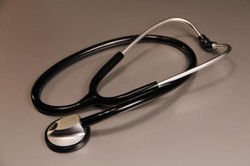In 1949, Norman Holter, a biophysicist, created a method to monitor cardiac rhythm in those who were at home or other places. This was a wireless system to monitor clinical signs and symptoms as well as disturbances of the heart rhythm. The advantage of this procedure included observation for longer periods of time than with a traditional electrocardiogram. It explored diagnosis, prognosis, and arrhythmia assessment as well [1, 2, 3, 5].
Moreover, it has become possible to collect information about cardiac activity when patients are asleep, having sex, walking, or other activities. Of especial interest is the observation of malignant heart rhythms such as ventricular tachycardia. Others include atrial fibrillation, premature atrial contractions, and atrioventricular heart block. Obviously, the procedure is beneficial in patients who are at risk for sudden cardiac death [1, 2, 3, 4, 5].




 The Reality of Aspirinon 05/24/2021
The Reality of Aspirinon 05/24/2021
 An Old Microbeon 03/31/2021
An Old Microbeon 03/31/2021
 Coronavirus and Mental Illnesson 02/14/2021
Coronavirus and Mental Illnesson 02/14/2021
 Acute Ischemic Strokeon 12/25/2020
Acute Ischemic Strokeon 12/25/2020


Comments
Thank you.
Current technology is the Kordia, which is a small device upon which two fingers are placed. It shows the graph of rhythm via cell phone, using a device, and for a fee an expert can read the ekg and report. It is a simple ekg, and costs about $100. The disadvantage is one must activate the device by holding two fingers on it for a very short period, about one minute.